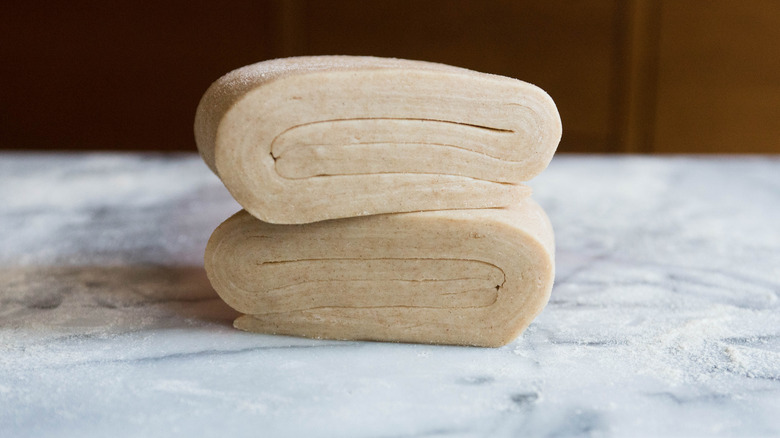How Many Times Should You Fold Your Croissant Dough?
In the world of pastries, it's hard to find one as iconic as the croissant. Whether plain, stuffed with chocolate or ham and cheese, or served with butter and jam, croissants are wildly popular.
While the croissant's flaky, buttery layers might have made it a beloved pastry across the globe, they also contribute to its other, more notorious reputation — that of being famously difficult to bake. The delicate layering is the result of lamination, the process in which butter is folded into dough over and over again. Just the thought of this daunting process is enough for many to give making homemade croissants a pass. But what if you discovered that you didn't need all those folds?
At the risk of potentially committing pastry blasphemy, the folks at King Arthur Baking Company dared to ask: "Do we really need all those folds?" During the testing process, they found a surprising answer. When folding croissant dough, less is most definitely more. How much less? Two different fold methods have been proven to do the trick instead of four — or more — complicated folds.
How to simplify the lamination process for croissants
The tests to determine the precise number of folds needed to make croissants were conducted by King Arthur baking ambassador Martin Philip, who was fiddling with the company's Pain au Chocolat recipe, which is essentially croissant dough shaped differently and filled with chocolate. He calculated that the number of folds the original recipe called for resulted in an astounding 163 layers of dough and butter.
Philip set about simplifying things. Through testing the recipe, he found that by using one letter fold (where the dough is folded in thirds as with a letter) and then doing one additional book fold (where the dough is folded in on itself and then in half, as if closing a book) he was able to create a pastry that was just as good as the original — with only 25 layers instead of 163.
Thanks to Philip's research, warm, flaky croissants at home suddenly seem more attainable. The folding takes a minute to get used to, but by simplifying the process, it no longer seems like you need a degree from the French Culinary Institute to impress your friends and family with homemade croissants. There likely won't be leftovers, but there's an easy trick to refresh stale croissants if you have extra. Kudos to Philip and the folks at King Arthur Baking Company for not gatekeeping croissants.

